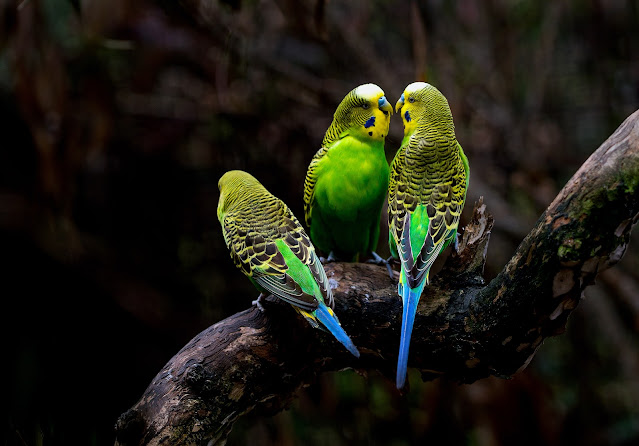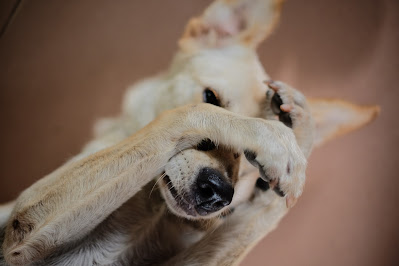Breeding Budgies: Pet Birds As Breeding Animals

Pet Birds As Breeding Animals: Did you know that budgies, also known as parakeets, are one of the most popular pet birds worldwide? With over 40 million budgies kept as pets, their vibrant colors and playful personalities make them a favorite among bird enthusiasts. But have you ever considered breeding budgies? It’s a fascinating process that allows you to witness the miracle of life and contribute to the preservation of these beautiful creatures.
However, there are important factors to consider before embarking on this journey. In this discussion, we will explore the benefits, challenges, and responsibilities of breeding budgies, providing you with valuable insights into the world of pet birds as breeding animals. So, let’s dive into the captivating world of budgie breeding and discover what it takes to become a responsible breeder.
Benefits of Breeding Budgies
Breeding budgies offer bird enthusiasts a plethora of benefits, ranging from the joy of their vibrant colors and distinct personalities to the opportunity of establishing a small, gratifying breeding setup. By pairing budgies in groups, you can create a successful breeding environment that allows for the production of healthy offspring. The first step in breeding budgies is to select a suitable breeding pair. It is important to choose birds that are compatible and exhibit desirable traits. Look for budgies that are in good health, have strong genetics, and demonstrate positive reproductive behaviors.
Once you have selected a breeding pair, it is essential to provide them with a suitable nest box. The nest box should be large enough for the birds to comfortably enter and exit, and it should be made of a durable material that can withstand the wear and tear of nesting activity. Place the nest box in a quiet and secure location within the breeding setup to provide the birds with a sense of safety and privacy.
Creating the right breeding environment is crucial for successful budgie breeding. Ensure that the birds have access to a well-balanced diet that includes a variety of fresh fruits, vegetables, and high-quality seeds. Additionally, maintain a consistent temperature and humidity level within the breeding area to mimic the budgies’ natural habitat.
Breeding budgies can be a rewarding and fulfilling experience for bird enthusiasts. It not only allows you to witness the beauty of their vibrant colors and unique personalities but also contributes to the preservation and continuation of the budgie species. With careful selection of breeding pairs, provision of suitable nest boxes, and maintenance of an optimal breeding environment, you can enhance the success of your budgie breeding endeavors.
Selecting the Right Breeding Pair
To ensure successful budgie breeding, it is crucial to carefully select a breeding pair that exhibits exceptional health, strong bonding, and desirable genetic traits. When selecting a breeding pair, it is important to consider their health status. Choose budgies that are in exceptional health and at least one year old to avoid genetic mutations in the chicks. It is also essential to look for signs of bonding between the pair. Watch for behaviors such as preening each other and holding beaks, as these indicate a strong connection between the birds.
In addition to health and bonding, genetic traits play a significant role in the selection process. Consider choosing budgies of bright and attractive varieties, such as Lutinos, Albinos, Clearwings, Spangles, and Pieds. However, while focusing on variety selection, it is important to also consider genetics. Make sure to select birds that have desirable genetic traits that can be passed on to their offspring.
Creating the right breeding environment is also crucial for successful breeding. Provide a large cage for the breeding pair, along with a nesting box for them to lay their eggs. Offering items such as cuttlefish, mineral blocks, perches, food, water, softwood, and spray water can help simulate the rainy season, which can encourage breeding behavior.
Monitoring the readiness of the breeding pair is essential. Pay attention to the color of their cere, which is the area above their beak. A deep blue cere in males indicates their readiness for breeding, while a rough, dark brown cere in females signals that they are ready to lay eggs.
Creating the Ideal Breeding Environment
To create the ideal breeding environment for budgies, it is important to consider several factors. First, provide nesting materials such as shredded paper or coconut fibers to encourage breeding behavior. Additionally, maintaining the appropriate temperature and humidity levels in the breeding area is crucial for the health and well-being of the birds. Finally, ensure that the breeding pairs have adequate space in their cage to engage in natural behaviors and avoid stress.
Nesting Materials for Budgies
Using a variety of nesting materials, such as wood shavings, shredded paper, or coconut fibers, is essential for creating a comfortable and safe breeding environment for budgies. These materials provide the budgies with the necessary insulation and cushioning for their nesting box or breeding cage. Natural materials like dried grass, hay, or feathers can also be used to encourage nesting behavior in budgies.
It is important to ensure that the nesting materials are clean and free from any pesticides or chemicals that could harm the budgies or their offspring. By offering a variety of nesting materials, you allow the budgies to choose what they prefer for building their nest, which can improve their breeding condition. Regularly monitoring and replacing the nesting materials is crucial to maintaining cleanliness and hygiene in the breeding environment, which is essential for the health of the budgies and the successful development of their eggs.
Temperature and Humidity Control
Maintaining precise temperature and humidity levels is crucial in creating the optimal breeding atmosphere for budgies, ensuring their reproductive success. Pet birds, such as budgies, are sensitive to changes in environmental conditions, and deviations from the ideal temperature and humidity range can negatively impact their breeding behavior and fertility.
The recommended temperature for breeding budgies is around 75-80 degrees Fahrenheit (24-27 degrees Celsius), while the humidity level should be maintained between 40-60%. To achieve these conditions, it is important to use a thermostat-controlled heating system and a humidifier or dehumidifier, if necessary. Regular monitoring of temperature and humidity levels using a hygrometer is essential to make necessary adjustments and provide a stable and comfortable breeding environment for these pet birds.
Providing Adequate Space
A spacious breeding environment with separate compartments for breeding pairs is essential to provide adequate space for budgerigars to breed successfully. When it comes to breeding budgies, it is important to provide them with a cage or aviary that is specifically designed for breeding purposes. This cage should have separate compartments for each breeding pair, allowing them to have their own space and privacy. Additionally, the breeding cage should be equipped with a nesting box and other necessary accessories to create a suitable environment for the budgies to breed.
It is recommended to use cabinets with one pair per cabinet, with a nesting box attached to the outside. This setup helps to mimic the natural nesting conditions for budgerigars and enhances their breeding success. Avoid breeding budgies in aviaries, as they may not provide the necessary privacy and seclusion that breeding pairs require. After the chicks have been weaned, it is important to transfer them to a larger cage or a separate section to provide them with more space for growth and development.
The Mating Process of Budgies
To successfully mate budgies, you must carefully pair them, considering their genetic background to avoid mutations. During courtship, observe behaviors such as singing, dancing, and feeding each other. Provide a nesting box for the female to lay eggs, and monitor the process closely, ensuring a nutritious diet and a suitable environment for successful breeding.
Pairing Budgies for Mating
Pairing budgies for mating involves gradually introducing breeding pairs to reduce aggression and observe their mating behaviors. It is important to select suitable pairs based on factors such as health, age, and genetic diversity to ensure healthy offspring. Before pairing, provide each budgie with a separate cage to establish their individual territories. When ready, place the cages side by side, allowing the birds to see and interact with each other without physical contact.
Once the budgies show signs of mutual interest, such as chirping and preening, they can be moved into a larger breeding cage. Provide a nesting box inside the cage to serve as a potential site for mating and egg-laying. Monitor the pair closely during this time to ensure their compatibility and to observe their mating behaviors. By following these steps, you can increase the chances of successful breeding among budgies.
Courtship Behavior in Budgies
Courtship behavior in budgies involves various displays and interactions that serve as a precursor to the mating process. During courtship, male budgies engage in elaborate behaviors to attract the attention of the female. They may sing and dance, showcasing their vibrant plumage and vocal abilities. The male may also regurgitate food to the female as a bonding and nurturing gesture.
Courtship can involve mutual preening, where both birds groom each other’s feathers, as well as close physical proximity, where they perch closely together. The male may perform a ‘bowing’ display, where he crouches with wings slightly outstretched, signaling his readiness to mate. Successful courtship results in the female accepting the male’s advances and the subsequent mating behavior. The courtship period is crucial in establishing a strong bond between the pair and preparing them for the breeding season, during which they will build a nest and raise their offspring.
Nesting and Egg-Laying
During the courtship period, successful courtship behavior in budgies leads to the nesting and egg-laying phase, which is a crucial part of the mating process. To facilitate this phase, breed budgies in nest boxes with entry holes at the top or side. It is recommended to breed them in individual cages or a small aviary using the colony breeding system. Provide the breeding pairs with a spacious cage equipped with essential items like a nest box, perches, and a mineral block to create a suitable breeding environment.
Look for signs of readiness to breed, such as a thicker and crusted cere in the hen. After successful mating, the first egg is laid approximately 10 days later. Chicks hatch around 18-23 days after the initial egg is laid. It’s important to monitor the female and ensure proper feeding and hygiene when looking after the budgie chicks. Gradually transition the chicks to a larger cage or a separate section after weaning. To prepare for the breeding process, provide the breeding budgies with a nutritious diet, maintain a stable environment with proper lighting, and select breeding pairs that are not closely related and are in exceptional health.
Caring for Budgie Chicks
To properly care for budgie chicks, it is crucial to monitor their growth and development, ensuring they receive appropriate nutrition and gradually introduce solid foods as they mature. Baby budgies rely heavily on their parents for food during the initial stages of their life. The parents provide essential nutrition through regurgitation, which contains vital nutrients required for the chicks’ growth and development. As the chicks grow older, it is important to help them transition to a solid food diet.
To assist the chicks in their journey towards independence, it is recommended to introduce solid foods gradually. Start by offering small pieces of soft fruits and vegetables, such as mashed sweet potatoes and carrots. These foods provide essential vitamins and minerals that contribute to the chicks’ overall health and well-being. Additionally, offering a mixture of sprouted seeds and commercial chick food can help meet their nutritional needs. Commercial chick food should be specifically formulated to provide the necessary protein, vitamins, and minerals required for their growth.
Maintaining a clean and hygienic breeding environment is crucial for the chicks’ well-being. Regularly clean the cage or aviary to prevent the accumulation of waste and potential infections. It is also advisable to separate the chicks from their parents once they are independent enough to prevent any potential aggression or stress.
Considerations for Breeding Budgies
When considering breeding budgies, it is important to take into account various factors to ensure a successful and responsible breeding experience. First and foremost, responsible breeding practices involve limiting breeding to one clutch per year. This ensures that the parents have enough time to recover and regain their strength before embarking on another breeding cycle. Additionally, providing a clean and quiet environment for the breeding birds and their offspring is crucial for their health and well-being.
Breeding budgies should not be done for trivial reasons, such as to entertain children, but rather to preserve and improve the breed. Before starting the breeding process, it is essential to have proper preparation and understanding of the time and financial commitment required. Breeding budgies can be a time-consuming and costly endeavor, and it is important to be fully aware of these considerations.
Consider the future challenges of finding homes for the offspring. Budgies can produce a large number of chicks, and it is important to have a plan in place for finding suitable homes for them. Additionally, be prepared to hand-raise chicks if needed. Some breeding pairs may not be able to provide adequate care for their offspring, and it may be necessary to intervene and hand-raise the chicks to ensure their survival.
It is also crucial to have access to avian veterinary care. Breeding budgies can come with unexpected challenges and emergencies, and having a trusted avian veterinarian who can provide guidance and medical assistance is essential.
Pet Birds As Breeding Animals Frequently Asked Questions
Can Budgies Breed With Other Birds?
Yes, budgies can breed with other birds, but it is not recommended. Hybrid budgie species may have genetic abnormalities and health issues. It is best to stick to breeding techniques that involve only budgies of the same species.
Are Budgies Easy to Breed?
Breeding budgies can be challenging for beginners. Understanding mating behaviors is key. Common challenges include limited space, special diet, and preventing parent bird exhaustion. Hand-raising chicks may be necessary. Access to avian vet care is essential.
How Do You Pair Budgies for Breeding?
To pair budgies for breeding, select compatible pairs of healthy, unrelated, and mature birds. Create a suitable breeding environment with a large cage, essential items, and a nest box. Understand budgie breeding behavior and ensure proper nutrition for breeding budgies.
Do Budgies Need to Be Alone to Breed?
Budgies do not need to be alone to breed. They actually prefer to breed in pairs or small groups. Pair bonding and creating a suitable breeding environment are important factors for successful breeding.
Conclusion
In conclusion, breeding budgies can be a rewarding endeavor, but it requires responsible practices and proper preparation. Limiting breeding to one clutch per year and considering the long-term commitment required for the care of the birds is important. Providing a clean and quiet environment for the parents and offspring, as well as educating oneself about breeding diets, reducing stress, and handling emergencies is essential. By following these guidelines, breeders can ensure the health and well-being of their budgies throughout the breeding process.








